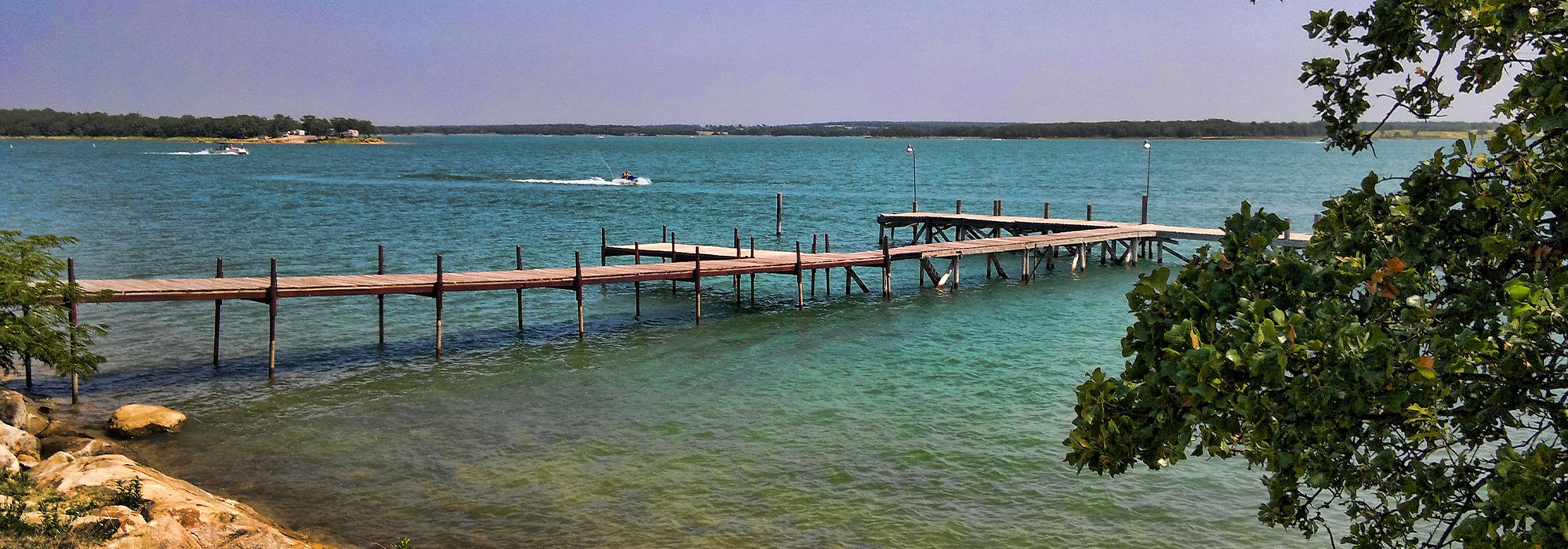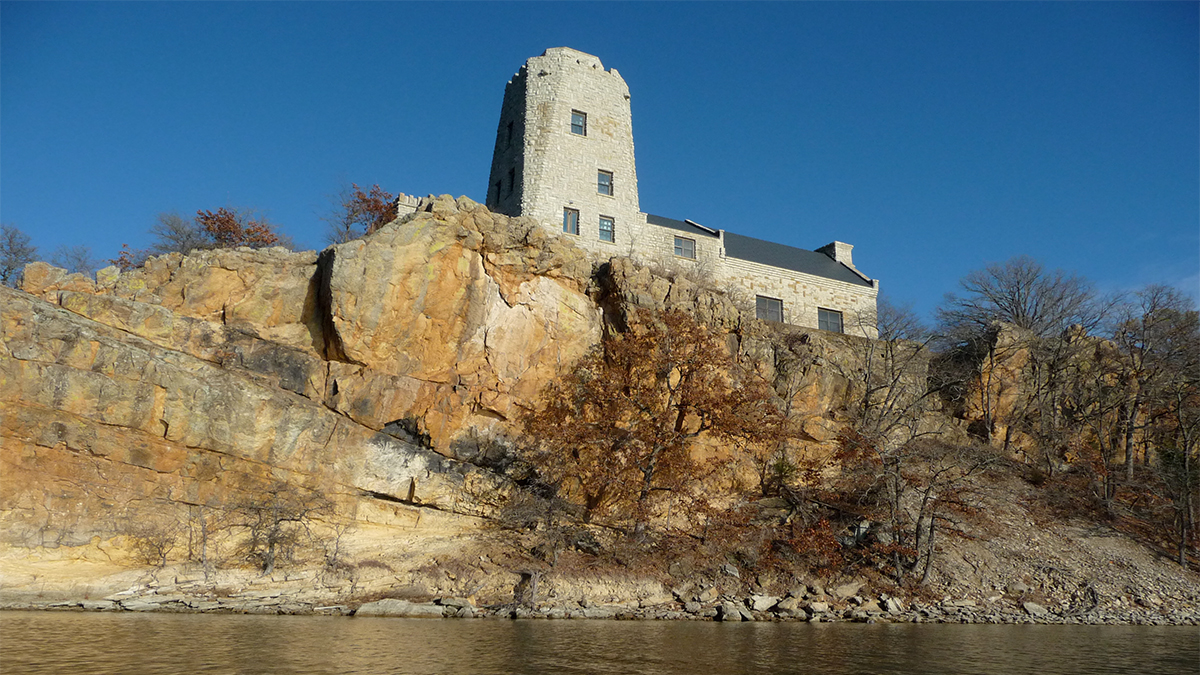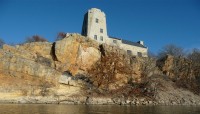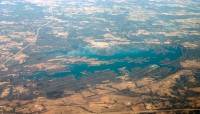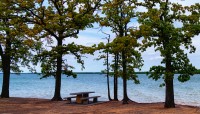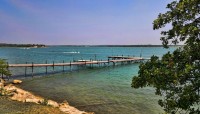Landscape Information
Located six miles north of the Texas border and just south of Highway 70, this 12,496-acre park features an irregularly shaped, 5,728-acre artificial lake, fed by tributaries of the nearby Red River. The site was developed from 1933 to 1942 by several New Deal agencies, including the Civilian Conservation Corps (CCC) and Works Progress Administration (WPA). It is distinguished for hosting one of the only permanent campsites available to African Americans in Oklahoma during an era of segregation.
The lake is impounded by a concrete and earthen dam constructed between 1933 and 1937. A perimeter road traces the lakeshore, hemmed by short grass prairie and stands of post oaks, pecans, cedars, and redbuds. Craggy peninsulas shape the waterfront, marked by a lodge and recreational amenities including beaches, campgrounds, and a marina. Several structures, including entry stations and cabins, are constructed with stone and timber sourced on site. A prominent, five-story limestone structure, Tucker Tower, occupies the park’s southeastern-most peninsula on a rocky bluff. Completed in 1938, the tower now serves as a nature center offering expansive views.
The public park was segregated, and included two campgrounds for Whites only and one, in a less desirable location, known as Camp Group Three, for African Americans only. Located on the lake’s southeastern shore, Camp Group Three is accessed via a mile-long curvilinear road and features cabins and other amenities. It was designed in the same style as the park’s other campgrounds, but with lower quality materials and fewer amenities.
The park was desegregated in the early 1960s and was listed in the National Register of Historic Places in 2001.



